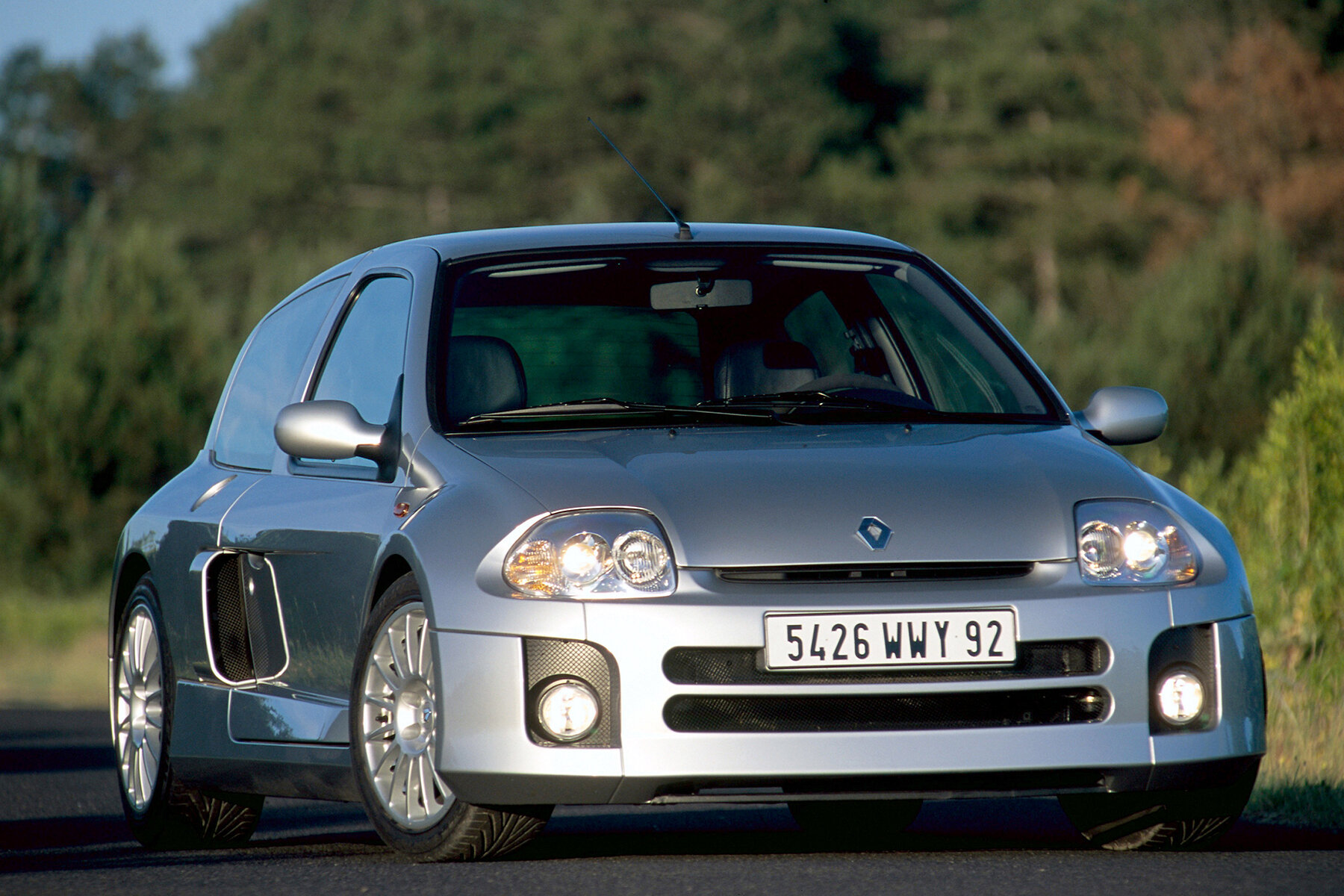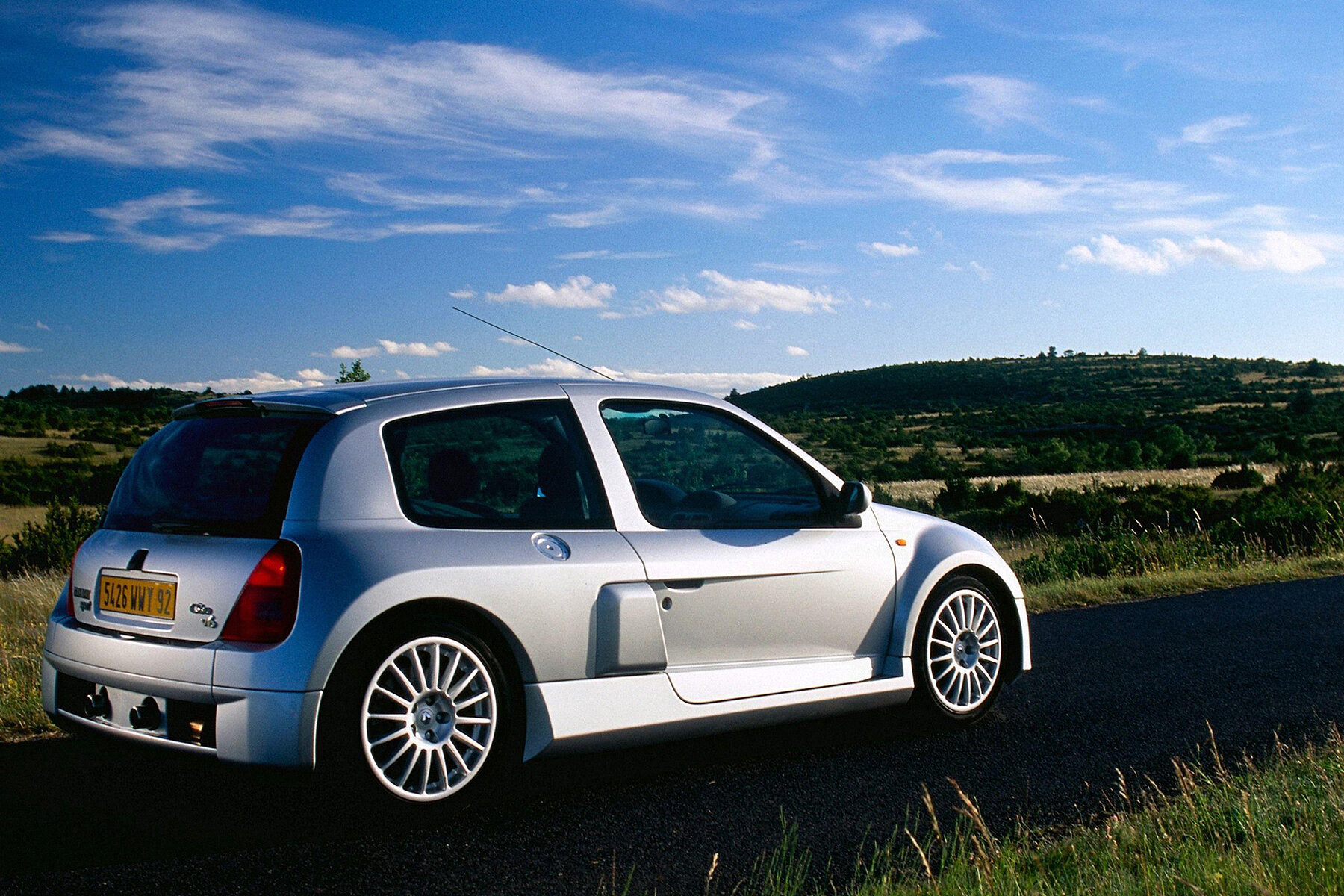
This isn’t just a Renault Clio. It’s a Renault Sport Clio V6 – more cylinders, a wider body and its engine moved behind the driver.
Every Monday we’re serving you up a delicious slice of pure postulation. That’s right, once a week we’re using our expertise and passion for the subject to predict what motors are destined for classic car stardom. This week, Parkers finance editor and former Classic Car Weekly news editor, Murray Scullion proposes the Renault Clio V6.
Sex sells. Size matters. Bigger is better. These are the basic principles on which the Clio V6 was made. A pumped up, racing-bred, mid-engined, rear-wheel drive hot-hatch was always going to get hearts racing. While its reputation as something hugely impractical and tricky to drive is well-trodden.
But now, it’s time to consider the Renault Clio V6 as a bonafide classic car.
Renault Clio V6: History
The Clio V6 story starts on the circuit rather than in a boardroom. In 1999 a single-make series for V6-engined Clios replaced the popular Renault Sport Spider Trophy championship. These first production cars were introduced in 2000 as a kind of halo product for the Clio range, sexing up the already pretty-sexy Clio 172 that would come out later that year. These Mk1 cars (referred to by Renault as Phase 1) were built by Tom Walkinshaw Racing in Sweden.
2003 saw the introduction of the Phase 2. These were built by Renault Sport in Dieppe like the race cars. Phase 2s are revered as being greatly improved over the Phase 1s. A longer wheelbase was introduced for improved stability, while Porsche was brought in to tune the engine, with power increasing from 230bhp to 255bhp. These cars also had a mild-facelift to bring them inline with the regular Clio too.
Production ceased in 2005 and Renault hasn’t been crazy enough to go mid-engined since.
Renault Clio V6: Rarity
Special-edition hot-hatches are hardly new. Most pokey hatchbacks are made in limited numbers. But the Clio V6 is a bit more special than that. Phase 1 cars were handbuilt alongside the Volvo C70 Coupe in Sweden, so obviously couldn’t be made in huge numbers. 1516 Phase 1 cars were made, and only 400 of those made it to the UK. Not as many Phase 2 cars were made - a mere 1309.
According to howmanyleft there are only 45 Phase 1s, and 65 Phase 2s registered on UK roads at the moment. The number of cars have been steadily decreasing in the past ten years - but we put that down to cars being tucked away in storage rather than being written off.
Renault Clio V6: Why should you care?

The Clio’s interior isn’t that special, until you turn around and look behind you.
Hot-hatches are iconic. They prove practical cars can be fun to drive, while they also make a habit of outshining more expensive and more complicated sports cars. But how about a hot-hatch that takes away all of the practicality? The V6 subs the Clio’s rear seats for a 3.0-litre V6 and a boot just big enough for a pair of shoes. It does at least have a tiny front boot that’s not even waterproof.
Best of all, the V6 was around 300kg heavier than the Clio 172. Meaning that despite the radical mid-engine/rwd layout, it was barely any quicker than the little 2.0-litre four-banger. Oh, and of course, prices from new were close to £26,000, so about 11 grand more than the 172. Like most classics then, the V6 is not a rational choice. Tricky to drive too - especially Phase 1 cars, especially in the wet. An incredibly short wheelbase, potent mid-engined 3.0-litre, and steering lock that was never quite enough are the chief reasons.
Phase 2 cars, with longer wheelbases, are easier to drive. But the transition from understeer to oversteer is still, erm, quick. Let’s talk about the soundtrack. You don’t so much hear that V6 as feel it. From low down it’s rumble, but it builds and builds to something rich. It’s unforgettable and you’ll tingle every time you drive it.
Another, rather pragmatic reason to buy a Clio V6 is that you’re unlikely to lose any money on one. Really good Phase 2 examples go for £50k plus. But more average Phase 1s can still be snapped up for sub £20k.
The CCfS Classic Car Prediction
The Clio V6 then, is a brilliantly flawed bit of kit that will likely never be replicated. The car’s precursor, the Renault 5 Turbo, also mid-engined, has long been considered a classic. But many people still see the Clio V6 as merely a bodykitted French car of the early 2000s.
In another two to three years, we expect Phase 1s to be welcomed into the classic fold. Facelifted later cars might be worth more, but will take a bit longer yet to be considered as a classic by the people who frequent classic car shows.
Saying that, there are plenty of options out there if you were to buy one. Once Goodwood’s events are back open, its Vee-Power show seems like an obvious option to interact with like minded enthusiasts. While hot-hatch-themed shows will always welcome the king of the hot-hatch.

Chunky, purposeful and absolutely wonderful…